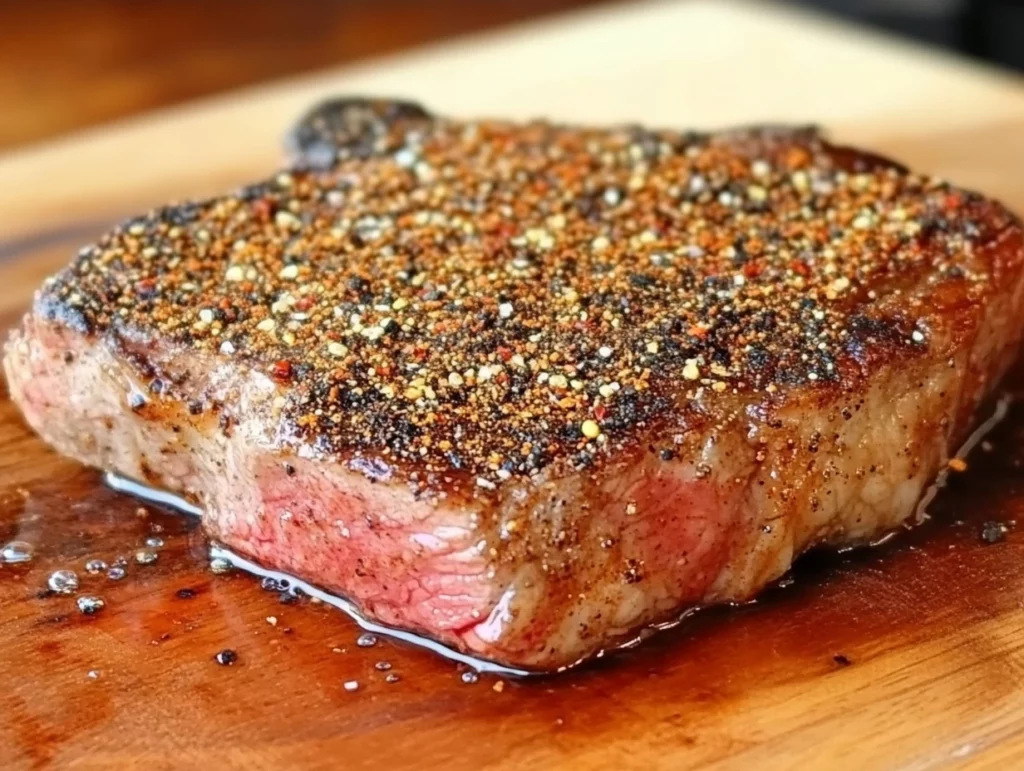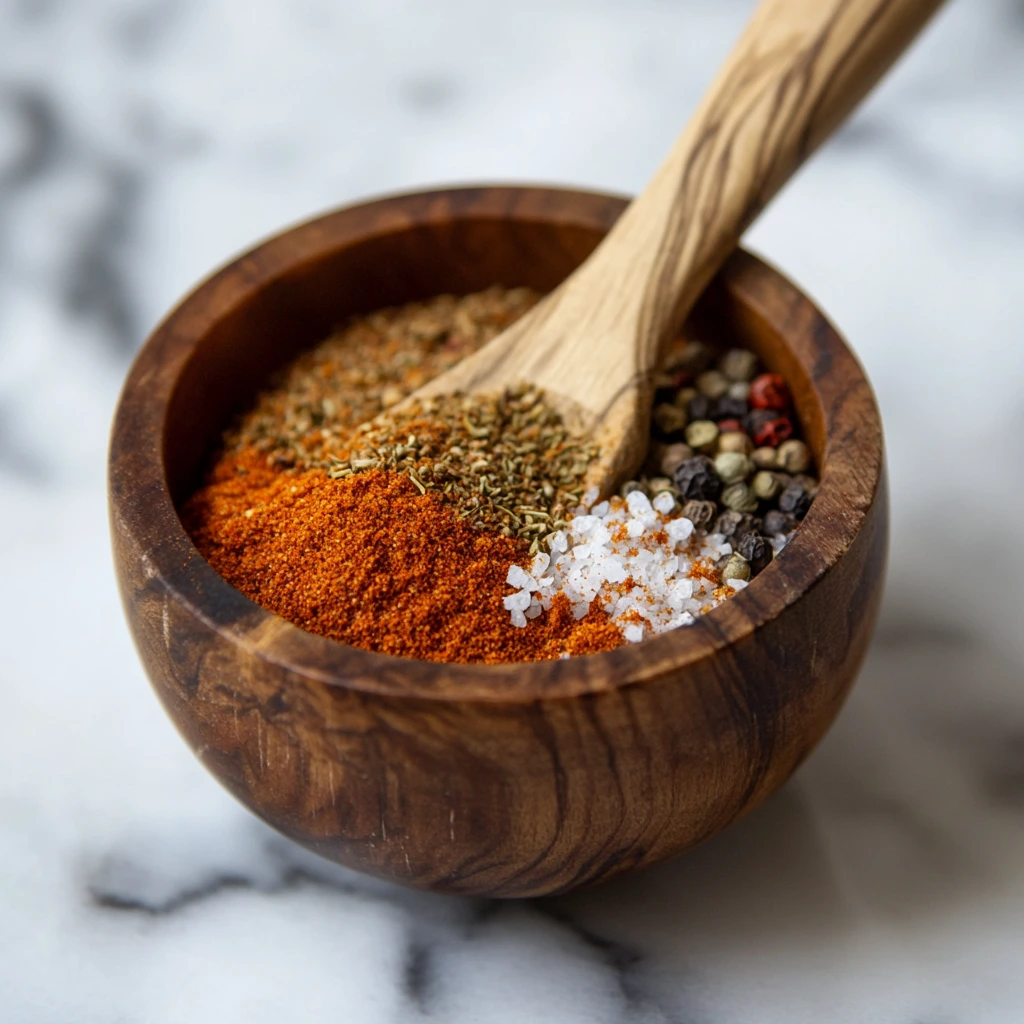If you’re like me, there’s nothing quite like enjoying a juicy, perfectly seasoned steak at a cozy steakhouse like Texas Roadhouse. The savory, smoky, and slightly spicy seasoning they use on their steaks is what makes every bite so irresistible. Now, imagine being able to recreate that same bold flavor right in your own kitchen, whenever you want!
The best part? It’s super easy to do. With just a few pantry staples, you can make your own Texas Roadhouse-style steak seasoning at home, bringing the full steakhouse experience to your dinner table. No more waiting for special occasions to enjoy that perfect steak—you’ll have the power to create it whenever the craving strikes.
In this recipe, I’ll walk you through how to make this delicious seasoning, and I’ll share a few tips for getting your steak to come out just like you remember from your favorite restaurant. So, grab your apron and let’s dive in!
What Makes This Steak Seasoning Special?
The beauty of this seasoning lies in its balance of flavors. It’s savory from the garlic and onion powder, with a touch of smokiness from the paprika, and just the right amount of heat from the cayenne pepper and chili powder. It’s perfect for seasoning a steak without overwhelming its natural flavor. Plus, there’s a little bonus flavor from the thyme, which adds an herbal note that takes this seasoning to the next level.
Whether you’re grilling, pan-searing, or broiling, this seasoning will coat your steak perfectly, ensuring every bite is full of mouth-watering goodness. I’m a big fan of the fact that you can tweak the spice levels to suit your taste. If you prefer a mild flavor, just skip the cayenne pepper. But if you’re someone who loves a little kick, the optional cayenne is your ticket to steak perfection.
Let’s Start with the Ingredients
Before you get cooking, it’s good to know what you’ll need to make this steak seasoning. The ingredients are simple but pack a big punch when combined. Here’s what you’ll need to grab:
- 2 teaspoons kosher salt
- 1 teaspoon black pepper
- 1 teaspoon paprika
- 1/2 teaspoon garlic powder
- 1/2 teaspoon onion powder
- 1/2 teaspoon chili powder
- 1/4 teaspoon cayenne pepper (optional, if you like a little heat)
- 1/2 teaspoon dried thyme (optional, for an extra layer of flavor)
All of these ingredients are probably already in your spice cabinet, which makes this recipe both convenient and budget-friendly. You’ll love how a few simple ingredients can transform your steak into a true steakhouse-quality meal.
Step 1: Mixing the Seasoning
The first step is easy and quick. Just grab a small bowl, and add all the ingredients. Toss in the salt, pepper, paprika, garlic powder, onion powder, chili powder, cayenne pepper (if using), and thyme (if you’re going for that extra herbal note). Stir it all together until the spices are well-distributed and the mixture is smooth.
This is where you can get a little creative if you want. If you like your steak to have a more pronounced flavor from a specific spice, feel free to adjust the ratios. Want it smokier? Add a little extra paprika. Need more heat? Increase the cayenne pepper. The beauty of making your own seasoning is that you’re in control of the flavor!
Step 2: Seasoning the Steak
Now that your seasoning mix is ready, it’s time to give your steak some love. Before you do anything, make sure your steak is patted dry with a paper towel. This helps the seasoning stick to the surface of the meat and ensures it gets that perfect coating.
Generously rub the seasoning onto both sides of the steak. You can use your fingers to gently press the seasoning into the meat, making sure it’s evenly distributed. The key here is to use enough seasoning so that it forms a nice, flavorful crust when you cook the steak. Don’t be afraid to coat it liberally—this is what gives your steak that incredible flavor that you love from Texas Roadhouse.
Step 3: Letting the Steak Rest
After seasoning, I highly recommend letting the steak rest for about 30 minutes before you cook it. This allows the spices to marinate into the meat, intensifying the flavor and making each bite even more delicious. But if you’re in a rush, you can absolutely cook it right away—just know that letting it sit for a bit will bring out the best in your steak.
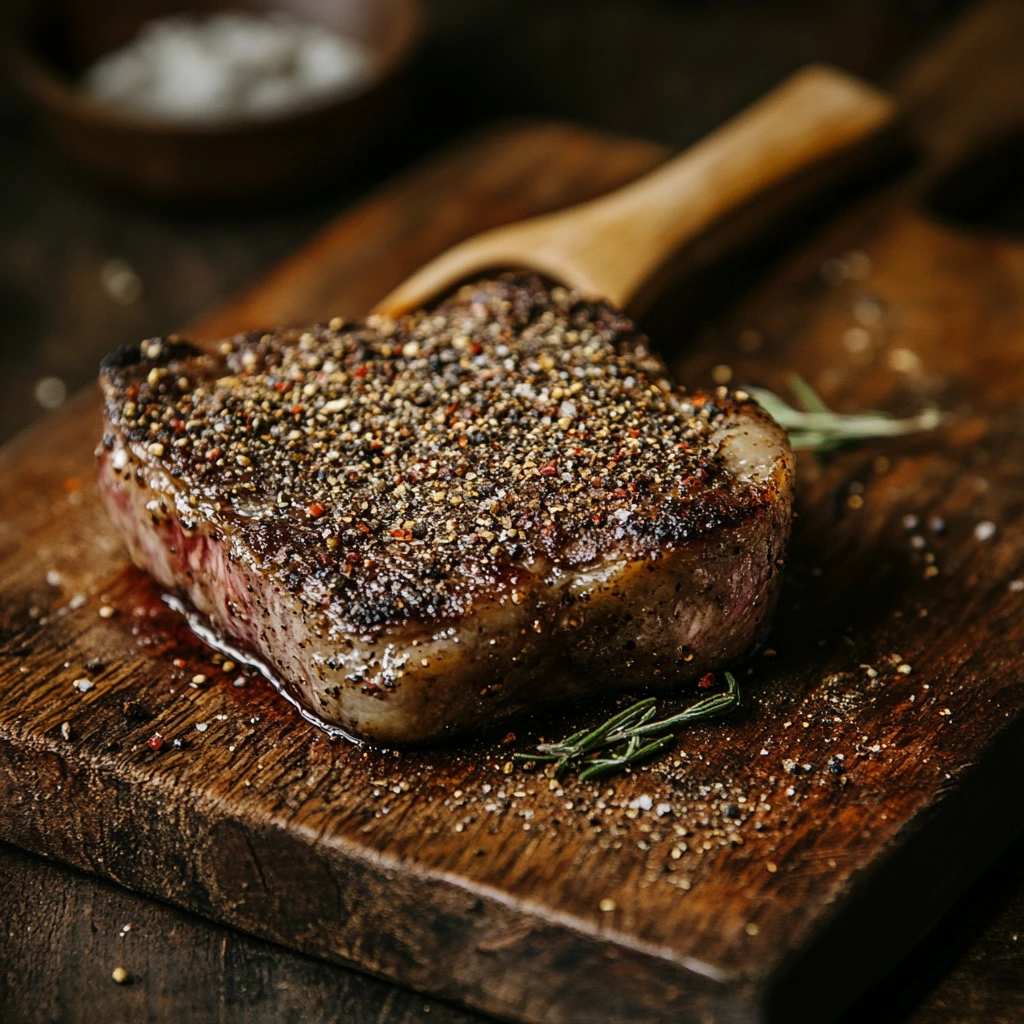
Cooking Your Steak to Perfection
Now that your steak is perfectly seasoned and ready to go, it’s time to cook it to the exact level of doneness you love. Whether you prefer your steak grilled, pan-seared, or broiled, this seasoning will bring out the best in each cooking method. In this section, we’ll break down the steps for grilling, pan-searing, and broiling, so you can enjoy a juicy steak every time.
Grilling Your Steak
If you have access to a grill, this is one of the best ways to cook a steak. Grilling adds a smoky flavor that complements the bold seasoning perfectly. Here’s how to grill your steak to perfection:
Preheat your grill: Whether you’re using a gas or charcoal grill, make sure it’s preheated to high heat, around 450°F to 500°F. You want a nice, hot grill to get that perfect sear on the outside while keeping the inside tender and juicy.
Oil the grill grates: Before placing the steak on the grill, brush the grates with a bit of oil to prevent sticking. You can use a paper towel dipped in oil and a pair of tongs to do this safely.
Place the steak on the grill: Lay the steak down on the grill and don’t move it around too much. Let it cook for about 4–6 minutes on the first side, depending on the thickness of the steak. You’re looking for a nice, dark sear.
Flip the steak: Use tongs to flip the steak to the other side. Continue cooking for another 4–6 minutes, adjusting the time based on your preferred level of doneness. A good rule of thumb is: 4 minutes for medium-rare, 5 minutes for medium, and 6 minutes for medium-well.
Check for doneness: Use a meat thermometer to check the internal temperature of the steak. For medium-rare, you’ll want it to reach 130°F to 135°F. For medium, aim for 140°F to 145°F, and for medium-well, you’re looking for 150°F to 155°F.
Rest the steak: Once your steak is done, remove it from the grill and let it rest for 5–10 minutes. This allows the juices to redistribute and keeps the steak moist and flavorful.
Pan-Searing Your Steak
If grilling isn’t an option, pan-searing is an excellent method that still delivers a beautifully browned crust and a juicy interior. Here’s how to pan-sear your steak:
Preheat your skillet: Start by heating a heavy skillet, like a cast-iron pan, over medium-high heat for a couple of minutes. It’s important to get the pan hot before you add the steak to ensure a good sear.
Add oil: Once the pan is hot, add a tablespoon of oil with a high smoke point, like vegetable oil or canola oil. Swirl it around to coat the bottom of the pan.
Sear the steak: Place your steak in the skillet. You should hear a satisfying sizzle as it hits the pan. Let it cook for about 4–5 minutes on the first side without moving it. This will help form a nice crust.
Flip the steak: After 4–5 minutes, flip the steak to the other side. Let it cook for another 4–5 minutes for medium-rare. For medium, cook for an additional 1–2 minutes. Use a meat thermometer to check the internal temperature, just like when grilling.
Add butter (optional): For an extra touch of flavor, you can add a tablespoon of butter to the pan during the last minute of cooking. As it melts, spoon the butter over the steak for added richness.
Rest the steak: Once your steak reaches the desired doneness, remove it from the skillet and let it rest for about 5–10 minutes.
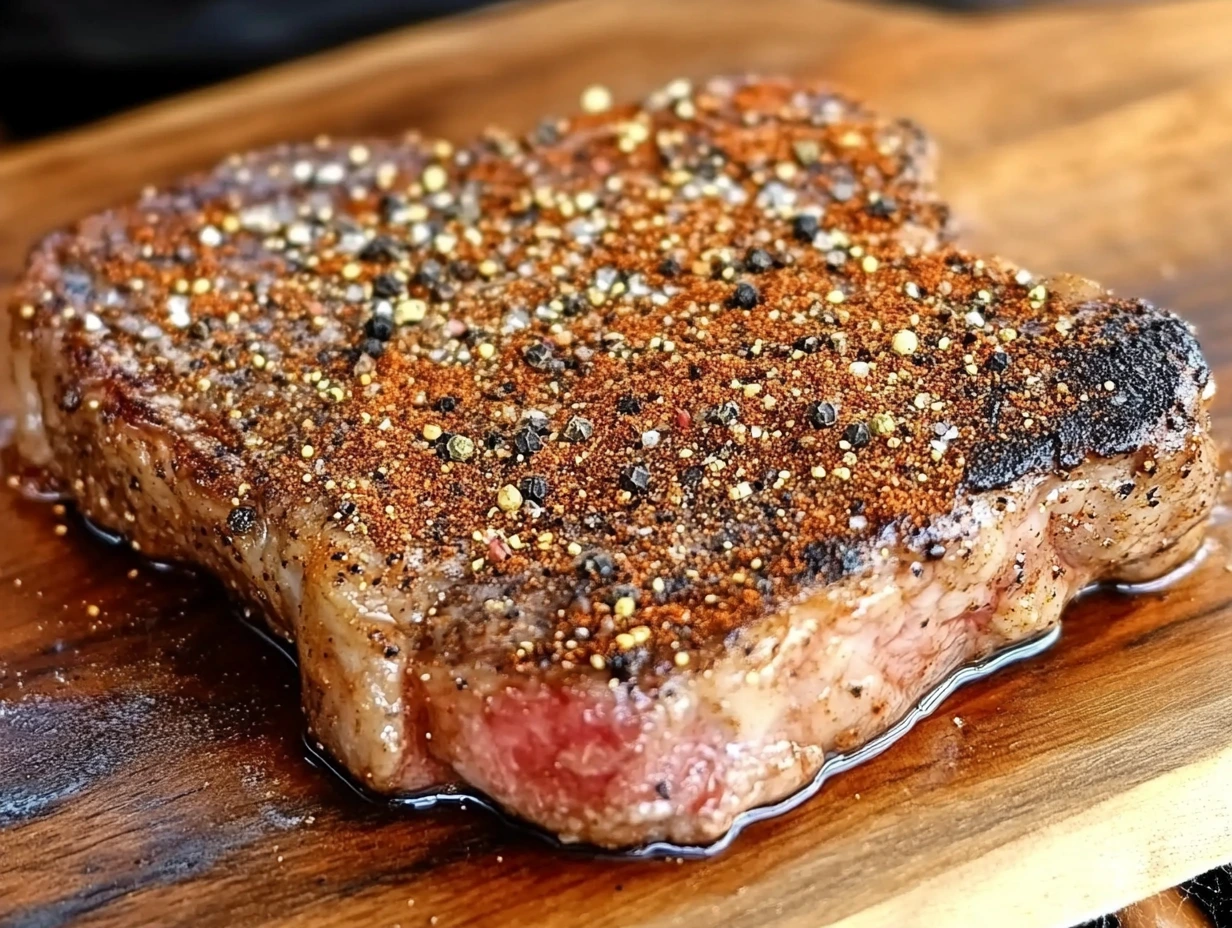
Broiling Your Steak
If you don’t have access to a grill or prefer to cook indoors, broiling your steak is a great option. The heat from the broiler is similar to grilling and will give you that delicious charred crust.
Preheat the broiler: Position your oven rack so that the steak will be about 4–6 inches from the broiler element. Turn on the broiler and let it heat up for a few minutes.
Prepare the steak: Place your seasoned steak on a broiler pan or a baking sheet lined with foil. You can also place a wire rack on the sheet to allow the heat to circulate around the steak.
Broil the steak: Place the steak under the broiler and cook for 4–6 minutes per side, depending on the thickness of the steak and how done you like it. Keep an eye on it to make sure it doesn’t burn.
Check for doneness: Again, use a meat thermometer to ensure the steak reaches your preferred doneness. Remember, for medium-rare, the steak should be 130°F to 135°F.
Rest the steak: After broiling, let the steak rest for 5–10 minutes to allow the juices to redistribute.
Final Tips for the Perfect Steak
Let the steak rest: No matter which method you choose, always let your steak rest before slicing into it. Resting allows the juices to redistribute within the meat, making the steak juicier and more flavorful.
Use a meat thermometer: A meat thermometer is your best friend when cooking steaks. It ensures you get the perfect level of doneness every time without having to cut into the steak.
Don’t overcrowd the pan: If you’re cooking more than one steak in a pan, make sure to leave enough space between them. Crowding the pan will cause the steak to steam instead of sear, which affects the texture and flavor.
FAQ: All Your Steak Seasoning Questions Answered
Now that you’ve got your Texas Roadhouse-style steak seasoning made and your steak cooked to perfection, you might have a few questions. Whether it’s about adjusting the recipe or storing leftovers, I’ve got you covered. Here are some of the most common questions I get asked about this seasoning and cooking the perfect steak.
1. Can I use this seasoning on other meats besides steak?
Absolutely! This seasoning is incredibly versatile and can be used on more than just steak. It’s perfect for seasoning chicken, pork chops, lamb, and even vegetables. If you’re grilling chicken or pork, just rub the seasoning onto the meat and cook as usual. You can also sprinkle it on roasted or grilled vegetables for an added flavor boost. The best part is that you can adjust the spice levels based on the type of meat you’re using, making it easy to tailor the seasoning to your tastes.
2. Can I make this seasoning ahead of time and store it?
Yes! This seasoning mix is great for making ahead. In fact, I recommend making a batch and storing it in an airtight container so you always have it on hand when you need it. It will stay fresh for up to six months if stored properly in a cool, dry place. This way, you’ll never be caught without your favorite steak seasoning again. It’s perfect for meal prep or last-minute grilling sessions.
3. What if I don’t like spicy food? Can I omit the cayenne pepper?
If you’re not a fan of spice, you can absolutely omit the cayenne pepper from the recipe. The chili powder and paprika will still provide plenty of flavor without the heat. If you want to keep some of the warmth but without the full kick, try using a smaller amount of cayenne—just a pinch can add a subtle warmth without overwhelming the dish.
4. Can I adjust the salt in this seasoning mix?
If you’re watching your salt intake or just prefer less salt, feel free to reduce the kosher salt in the recipe. Start with one teaspoon instead of two, and taste test it when you’re seasoning the steak. You can always add more salt later, but it’s harder to take it out once it’s in, so it’s best to start with less and add as needed.
5. How do I know when my steak is done cooking?
Using a meat thermometer is the best way to ensure your steak is cooked to your preferred level of doneness. Here’s a quick guide for internal temperatures:
- Rare: 120°F – 125°F
- Medium-rare: 130°F – 135°F
- Medium: 140°F – 145°F
- Medium-well: 150°F – 155°F
- Well-done: 160°F and above
Of course, if you don’t have a thermometer, you can use the “touch test” method by pressing the steak with your finger to gauge its firmness, but a thermometer will always be the most accurate way to check.
6. What’s the best way to store leftover steak?
If you have any steak left over, make sure to store it properly to maintain its flavor and juiciness. Wrap the steak tightly in plastic wrap or aluminum foil, and then place it in an airtight container in the fridge. Leftover steak can last for up to 3–4 days. When reheating, try to use a low heat to avoid overcooking it. You can reheat the steak in a skillet with a bit of butter or in the oven, but make sure to cover it to keep it moist.
7. Can I use this seasoning for a steak rub instead of just sprinkling it on top?
Definitely! This seasoning mix works great as a dry rub for your steak. If you want to create a more intense flavor, rub the seasoning into the meat and let it sit for 30 minutes to an hour (or even overnight) before cooking. This allows the flavors to penetrate the steak, creating a deeper, more flavorful crust when you cook it.
Conclusion: Elevate Your Steak with Texas Roadhouse Seasoning
Now that you’ve got the recipe, the cooking tips, and the answers to some of the most common questions, you’re all set to make a delicious, restaurant-quality steak right at home. This homemade Texas Roadhouse-style seasoning is guaranteed to impress anyone who tastes it—whether you’re cooking for yourself or hosting a family dinner.
The beauty of this seasoning is how simple yet impactful it is. With just a handful of ingredients, you can bring that irresistible steakhouse flavor to your kitchen anytime. Plus, it’s so versatile! Whether you’re grilling, pan-searing, or broiling, you’ll always have the perfect seasoning to enhance the natural flavor of your steak.
Don’t forget to experiment a bit. Tweak the spice levels to your liking, and feel free to try it on other meats and vegetables. I’d love to hear how you use this seasoning and any creative twists you add. So, fire up the grill (or skillet, or broiler) and get cooking! Enjoy your perfectly seasoned steak, and happy eating!
Print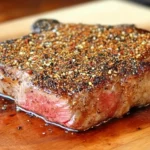
Texas Roadhouse Steak Seasoning
- Author: Andrew Recipes
Description
This homemade Texas Roadhouse-style steak seasoning brings the bold flavors of a restaurant-quality steak right to your kitchen. With a perfect blend of savory, smoky, and slightly spicy ingredients, this seasoning enhances the natural flavor of the steak without overpowering it. Whether you’re grilling, pan-searing, or broiling, this seasoning will give your steak that irresistible, mouth-watering taste you love from your favorite steakhouse. Customize the level of heat with cayenne pepper and add a touch of herbs with thyme for an extra depth of flavor.
Ingredients
- 2 teaspoons kosher salt
- 1 teaspoon black pepper
- 1 teaspoon paprika
- 1/2 teaspoon garlic powder
- 1/2 teaspoon onion powder
- 1/2 teaspoon chili powder
- 1/4 teaspoon cayenne pepper (optional, for a kick)
- 1/2 teaspoon dried thyme (optional, for an herbal note)
Instructions
Mix the Seasoning
In a small bowl, combine all the ingredients: salt, black pepper, paprika, garlic powder, onion powder, chili powder, cayenne pepper (if using), and thyme (if using). Stir until the spices are evenly distributed.
Season the Steak
Pat the steak dry with a paper towel to help the seasoning stick. Generously rub the seasoning blend onto both sides of the steak. Use your fingers to press the seasoning into the meat for better flavor penetration.
Cook the Steak
Grill, pan-sear, or broil the steak to your desired level of doneness. Let the steak rest for 5–10 minutes before slicing to allow the juices to redistribute.
Notes
This seasoning can be stored in an airtight container for up to 6 months, making it a great staple for future steaks. For extra flavor, let the seasoned steak sit for 30 minutes before cooking to allow the spices to marinate into the meat. If you prefer a milder seasoning, reduce or omit the cayenne pepper.
